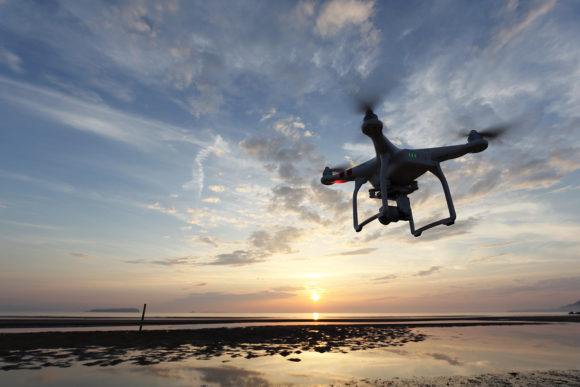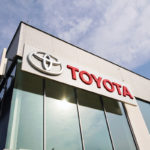In the year 2016, as in past years, there were the familiar or continuing stories including reinsurers still wishing and hoping for a hardening market; property/casualty insurance carriers reporting financial results dampened by catastrophes, auto losses, and interest rates; and Republicans trying to undo the Affordable Care Act and Dodd-Frank.
There were a few big individual stories. This year’s included AIG trying to regain its footing and ward off activist investors; Hank Greenberg in court battling the terms of the 2008 bailout of AIG and defending himself in a decades-old reinsurance fraud case; MetLife trying to shed its systemically important designation, and Hulk Hogan’s privacy lawsuit and settlement over a sex tape. Oh, and the Pokémon Go craze that appears to have settled down without causing a major catastrophe.
But those were not the most important P/C insurance stories of the year. Based on readership, reader comments, potential for lasting impact, and Insurance Journal editors’ viewpoint, the top 12 national insurance stories were those involving one event or a series of related events that are affecting the P/C insurance industry now and promise to do so for years to come. Here is the countdown from #12 to #1 of the most important insurance trends and news stories of 2016:
Top 12 Insurance
Trends and News Stories of 2016
12. Drone Developments

The drone picture became clearer this year as the U.S. government set guidelines and businesses, including insurers, tested their use in disasters and other scenarios. The stage was set for a clash over how or whether to regulate their use and manufacture. Businesses including insurers remained bullish even as the consumer market seemed to fade.
- Drone Viewpoint: Let U.S. Protect Airspace, While States Protect Privacy
- Registered Drones Now Outnumber Planes
- The Future of Commercial Drone Use
- Large Insurers Eager but Cautious About Drone Insurance Market
- U.S. Issues Final Commercial Drone Regulations
- New U.S. Rules Seen ‘Major Step’ for Drone Industry; Rules on Deliveries Still to Come
- Drone Makers Shift to Commercial Uses as Consumer Market Crashes
11. Deepening Driver Distraction
 While auto insurers are trying to figure out what to do about the coming of driverless cars, they are having trouble dealing with today’s vehicles that still have drivers. Rising personal and commercial lines auto losses have been cutting into carriers’ profits. Insurers have been raising rates where they can but some don’t think those will keep up with losses. As the economy has improved, there are more drivers and more miles being driven. Despite advancements in auto safety, traffic fatalities are up, which could be partly due to distracted driving. If results don’t improve, insurers may wish for the era of driverless vehicles to arrive sooner rather than later.
While auto insurers are trying to figure out what to do about the coming of driverless cars, they are having trouble dealing with today’s vehicles that still have drivers. Rising personal and commercial lines auto losses have been cutting into carriers’ profits. Insurers have been raising rates where they can but some don’t think those will keep up with losses. As the economy has improved, there are more drivers and more miles being driven. Despite advancements in auto safety, traffic fatalities are up, which could be partly due to distracted driving. If results don’t improve, insurers may wish for the era of driverless vehicles to arrive sooner rather than later.
- Traffic Fatalities Continue to Rise; Up 9% in First Half of Year
- Commercial Auto Insurance Remains a Loser on the Whole: Fitch
- Auto Losses Seen Cutting P/C Insurance Profits Until 2016
- P/C Insurers Caught Between Slowing Premium Growth and Rising Loss Ratios
- P/C Insurers Face Tough Sledding in 2016, Warns S&P
- Hartford’s Execs Make Plea to End ‘Real Issue, Real Pain’ of Distracted Driving
10. Awareness, Action on Opioids
 The opioid epidemic continued to tear apart lives, families and communities. Workers’ compensation professionals saw the effects among their insureds. Amid the continuing tragedy, the year saw some evidence of progress, at least within the workers’ compensation world—the development of strategies for identifying injured workers most susceptible to opioid abuse, a drop in the number of cases involving opioid prescriptions, new state laws and federal guidelines aimed at curbing over-prescribing, and more awareness of alternatives to addictive painkillers. Nobody is saying the war is over but some of the efforts may be helping to ease the epidemic.
The opioid epidemic continued to tear apart lives, families and communities. Workers’ compensation professionals saw the effects among their insureds. Amid the continuing tragedy, the year saw some evidence of progress, at least within the workers’ compensation world—the development of strategies for identifying injured workers most susceptible to opioid abuse, a drop in the number of cases involving opioid prescriptions, new state laws and federal guidelines aimed at curbing over-prescribing, and more awareness of alternatives to addictive painkillers. Nobody is saying the war is over but some of the efforts may be helping to ease the epidemic.
- Most Doctors Overprescribe Opioids: National Safety Council
- FDA Extends Required Warnings to Short-Acting Opioid Painkillers
- Public, Private Insurers Picking Up More of Opioid Drug Costs
- Employers Pay As 32% of Opioid Prescriptions Are Abused: Report
- Here’s What’s Happening with Drug Costs in Workers’ Compensation
- Opioid Alternatives Can Be Hard-to-Find and Costly
- Could This New Drug Ease America’s Opioid Crisis?
- WCRI Finds ‘Noticeable’ Drop in Opioid Prescriptions in Workers’ Compensation Cases
9. New Chubb’s Debut

ACE’s acquisition of Chubb closed in January. The result is the world’s largest publicly-traded property/casualty insurer. While complete integration will take years, early reports are that things have been going smoothly. The new Chubb’s CEO Evan Greenberg says the continuity of employees working with agents and brokers has been key. As expected, there were some executive departures and some moves by competitors to grab any business that fell through the cracks. Chubb has expanded its small commercial offerings, launched a healthcare practice, and fended off serious competition in its highly-valued high-net worth market.
- ‘New Chubb’ Opens as Giant ACE, Chubb Merger to Close
- CEO Greenberg Confident Most Top Talent, Agents Will Stay with New Chubb
- Chubb Names Leaders for Expanded Small Commercial Division for North America
- New Chubb ‘Off to Good Start,’ Says Greenberg While Assessing Merger, Competition, Agents
8. Google’s a No-Go
 In February, Insurance Journal broke the big news that Google was shutting down its online auto insurance shopping site. In one corner of the industry there was a sigh of relief; in the other, an “I told you so” could be heard. Did the industry dodge a bullet? Maybe, maybe not. To the extent Google’s failure scares off other large online retailers, it’s perhaps a victory for agents and, some argue, consumers. But the online auto insurance marketplace is not going away. There are plenty of startups and others trying to fill the gap left by Google. None, however, are as big as Google… yet anyway.
In February, Insurance Journal broke the big news that Google was shutting down its online auto insurance shopping site. In one corner of the industry there was a sigh of relief; in the other, an “I told you so” could be heard. Did the industry dodge a bullet? Maybe, maybe not. To the extent Google’s failure scares off other large online retailers, it’s perhaps a victory for agents and, some argue, consumers. But the online auto insurance marketplace is not going away. There are plenty of startups and others trying to fill the gap left by Google. None, however, are as big as Google… yet anyway.
- Exclusive: Google to Shut Down Online Insurance Site, Partners Say
- Insurance Industry Analyzes Google’s Failed Online Insurance Experiment
- Why Google’s Not So Smart or Fast and Insurance Agents Aren’t Dead… Yet
- Should Google’s Parent Buy AIG?
- With Google Gone, What’s the Future for Online Insurance Shopping?
7. Climate Change, Continued
 This issue will continue to be on the industry’s radar as long as the climate keeps warming, sea levels keep rising and storms keep intensifying. Science is overtaking politics for the most part and scientists, businesses, modelers and policymakers are sharing information and ideas. There are debates over how proactive to be in prevention, who pays for mitigation, and how much insurers should disclose about how they are managing their exposure. The Paris agreements were hailed as a landmark but after the presidential election, the world is waiting to see how much of a participant the U.S. government will be under Trump.
This issue will continue to be on the industry’s radar as long as the climate keeps warming, sea levels keep rising and storms keep intensifying. Science is overtaking politics for the most part and scientists, businesses, modelers and policymakers are sharing information and ideas. There are debates over how proactive to be in prevention, who pays for mitigation, and how much insurers should disclose about how they are managing their exposure. The Paris agreements were hailed as a landmark but after the presidential election, the world is waiting to see how much of a participant the U.S. government will be under Trump.
- Survey of Economists Shows Climate Change Impact Sooner, More Severe
- Reinsurance Group Head Puts Science in Climate Change Discussion
- Berkshire Hathaway Balks at Reporting on Climate Change Risks
- How Will Paris Agreement Change the Insurance Industry?
- Rural Coastal Counties Fear Economics of Battle Against Rising Seas
- Climate Change Modeling is Closer than You Think
- RIMS 2016: Sea Level Rise Will Be Worse and Come Sooner
- Could More State Commissioners Require Climate Disclosure?
- Climate Scientists Coming to Terms with Skeptical Trump Administration
- Is Climate Change Causing Colder Weather and More Snow in Eastern U.S.?
6. Drive for Autonomy
 The insurance implications of autonomous vehicles have been discussed for several years now. Insurers know that the prospect of lost revenues is around the corner and they have been weighing how they might benefit in other ways from the data-driven future of transportation. But this year the issues of liability for autonomous driving and safety of driverless vehicles came into closer view after Tesla semi-autonomous cars were involved in accidents and the federal government issued safety guidance for automakers. The future may be closer than it appears.
The insurance implications of autonomous vehicles have been discussed for several years now. Insurers know that the prospect of lost revenues is around the corner and they have been weighing how they might benefit in other ways from the data-driven future of transportation. But this year the issues of liability for autonomous driving and safety of driverless vehicles came into closer view after Tesla semi-autonomous cars were involved in accidents and the federal government issued safety guidance for automakers. The future may be closer than it appears.
- Driverless Cars to Slash U.S. Auto Insurance Premiums
- Crash Rates Lower for Self-Driving Cars: Virginia Tech Study
- U.S. Safety Rules Key to Driverless Car Future: Google
- Software Qualifies as a Driver, Says U.S. Safety Agency on Google Self-Driving Car
- Self-Driving Cars to Create Long Term Challenges for Auto Insurers: Moody’s
- Driverless Car Supporters Urge National Laws to Override State, Local
- Studies Weigh How Human Behaviors Affect Self-Driving Cars
- How Tesla Liability in AutoPilot Crash Could Turn on Data Collected by Car
- Texas Man in Tesla Autopilot Crash Won’t Sue, But Car Insurer May
- Autopilot Warning May Not Help Tesla in Crash Defense
- Risk Managers Fear Cyber and Liability Risks of Autonomous Vehicles: Survey
- Probe of Tesla Crash to Address Broader Safety Issues of Automation in Cars
- Start-Up Otto in Fast Lane to Test Self-Driving Trucking by Year’s End
- How Uber Plans to Transform the Long-Haul Trucking Business
5. Employee-Employer Disruption

The rise of the gig economy and new federal rules on joint employer liability cast a spotlight on employer and employee relations and classifications. Uber drivers moved to be classified as workers rather than independent contractors but Uber pushed back. Also at issue is the use by on-demand providers of mandatory arbitration clauses to settle disputes with their workers. Even as the rules are being worked out, insurance entrepreneurs moved to capture the gig worker market. Joint employment also emerged as an issue in franchising, contracting, temporary staffing and other arrangements in which companies use workers but do not directly employ them. New U.S. Labor Department guidance looked to classify more U.S. companies as “joint employers” of workers and hold them liable for labor violations.
- Gig Economy Now 6.5% of U.S. Workforce; Provides Extra Income for 10 Million
- Startup Slice, Offering Insurance for On-Demand Workers, Raises $3.9M
- Uber Settlement Doesn’t Settle Gig Economy’s Contractor vs. Employee Dispute
- RIMS 2016: Employee vs. Contractor Debate to Become Even Hotter
- How Gig Economy Is Using Private Arbitration to Win on Labor Classification
- Failure of Uber Settlement Opens Door for Wage Claims
- Browning-Ferris Files Appeal of NLRB’s Joint Employer Liability Ruling
- U.S. Labor Department Issues Joint Employer Liability Rules
- How Employer Joint Liability Is Changing
4. Small Commercial Goes Big Online
 The real startup and online action in 2016 was on the small commercial lines side. There were new ideas, money and people focused on selling insurance to small businesses over the Internet. They vowed to not only quote and bind online but also speed up and simplify the application, underwriting, rating and policy issuance processes. Some promised tools for managing risk and policies. In what could be a game-changer, giant Allstate launched a site promising a small commercial policy in five minutes.
The real startup and online action in 2016 was on the small commercial lines side. There were new ideas, money and people focused on selling insurance to small businesses over the Internet. They vowed to not only quote and bind online but also speed up and simplify the application, underwriting, rating and policy issuance processes. Some promised tools for managing risk and policies. In what could be a game-changer, giant Allstate launched a site promising a small commercial policy in five minutes.
- Why Small Commercial Lines May Not Be So Bright for Agency Carriers
- 2 Instech Startups Target Small Business Insurance Market
- Could Allstate’s ‘5 Minute’ Small Business Policy Transform Commercial Lines Sales?
- AIG, Hamilton, Two Sigma to Launch Small-Medium Business Insurance Joint Venture
- Commercial Lines Tech Startup Embroker Now Open for Business
- CoverHound Small Business Commercial Suite Goes Live
- Indio, Tech Startup for Commercial Insurance Brokers, Raises $2 Million
- Insureon Secures $3B in Capacity from Lloyd’s to Launch MGA for Small Business
- Small Business Insurance Site CoverWallet Pulls In $7.8 Million in Funding
3. Cyber Is the New Normal

This year was cyber-newsworthy because cyber attacks no longer made major headlines, unless they were by the Russians. Data breaches and other cyber attacks have become almost routine and no sector is immune. The insurance industry has responded with a dizzying array of offerings of insurance coverages, cybersecurity options and cyber risk management services. But most underwriters continue to be cautious and the coverages continue to evolve. The industry still sees cyber as a tremendous growth area even amid signs that growth is slowing a bit.
- 9 Top Cyber Attacks Reported by Small Businesses; Most Still Unprotected
- Fallout from Travelers CGL Cyber Ruling: Insurance Buyers and Sellers Beware
- 9 Top Cyber Attacks Reported by Small Businesses; Most Still Unprotected
- AIG, Chubb, XL Lead in $1 Billion U.S. Cyber Insurance Market: Fitch
- 50% of Risk Managers Bought or Increased Cyber Insurance in Last Year: HSB
- Cyber Insurance Purchasing Slowing After 6 Years of Fast Growth
- Cyber Risk Costs Not Big Enough to Spur Investment by Businesses
- Rating Agency Warns P/C Insurers on Taking on Too Much Cyber Risk
2. Insurtech Intensification
Even while investments in fintech firms cooled in 2016, interest in the insurtech sector remained hot. Investors included venture capitalists as well as standard insurers. Small commercial lines, as well as homeowners and renters insurance lines, are attracting the most interest. Some of the startups that could become tomorrow’s household names include CoverHound, Lemonade, Embroker, Friendsurance, TROV, Insurify, Verifly, The Zebra, Driveway, Next, WeGoLook, CNinsure, ClaimBot, Insureon, Root, Bunker, Slice and PolicyGenius.
- Insurtech to Become Part of Traditional Insurance Landscape: S&P Report
- Venture Capital, Traditional Insurer Interest in Insurtech Remains High
- Betting on the Insurance Industry of Tomorrow at InsureTech Conference
- 10 Takeaways from the Future of Insurance and InsureTech Connect Conference
- Startup Lemonade Bets Behavioral Science Can Help Insurance Not Suck
- Metromile Auto Insurer Gets $192 Million, Mark Cuban and Mosaic’s 50 State Licenses
- Crawford Buys Majority Stake in ‘Uber-Like’ Field Inspection Firm WeGoLook
1. Trump and Republicans on Top

The number one story came late in the year: the election that saw Donald Trump become President and Republicans retain control of the House, Senate, Supreme Court nominees and a majority of state legislatures and governorships. The vote signals a potential reversal of course from many of the policies pursued the past eight years by the Obama Administration. The new politics could see elimination of certain provisions of Obamacare and Dodd Frank that some in the industry will be happy to see go. Labor regulations and tax changes under Trump and Republicans should favor businesses as well. But the Trump era could mean trouble for industry-supported free trade agreements, measures against climate change, and workplace, vehicle, food, environmental and product safety regulations. A handful of states elected new insurance commissioners and a few others are waiting to see who their newly-elected governors will appoint.
- President Trump Expected to Target Immigration, Taxes, Trade, Affordable Care Act
- Rep. Hensarling’s Plan Could Be Blueprint for Trump Revamping of Dodd-Frank
- Trump Could Rip Up Decades of Climate Deals in a Year
- Fitch Sees Large Insurers Gaining from Trump Deregulation
- Trump May Keep Key Affordable Care Act Provisions
- Republican Platform Under Trump: Reinstate Glass-Steagall, Go Slow on Trade Pacts
- Berkley Downplays Effects of Trump, Brexit Elections; Remains Optimistic for Insurance
- Climate Scientists Coming to Terms with Skeptical Trump Administration
Topics Trends USA Carriers Agencies Cyber InsurTech Auto Legislation Workers' Compensation Tech Market Property Casualty Climate Change Tesla Sharing Economy AIG Ridesharing Chubb
Was this article valuable?
Here are more articles you may enjoy.




 Group Sues California Department of Insurance Over FAIR Plan Surcharges
Group Sues California Department of Insurance Over FAIR Plan Surcharges  Potential Tariff Auto Severity Impact on Travelers: Single-Digits or Less
Potential Tariff Auto Severity Impact on Travelers: Single-Digits or Less  Marsh Sues Aon, Ex-Team Leader Over Exit of 20 Construction Surety Employees
Marsh Sues Aon, Ex-Team Leader Over Exit of 20 Construction Surety Employees  Class Action Accuses Toyota of Illegally Sharing Drivers’ Data With Progressive
Class Action Accuses Toyota of Illegally Sharing Drivers’ Data With Progressive 

